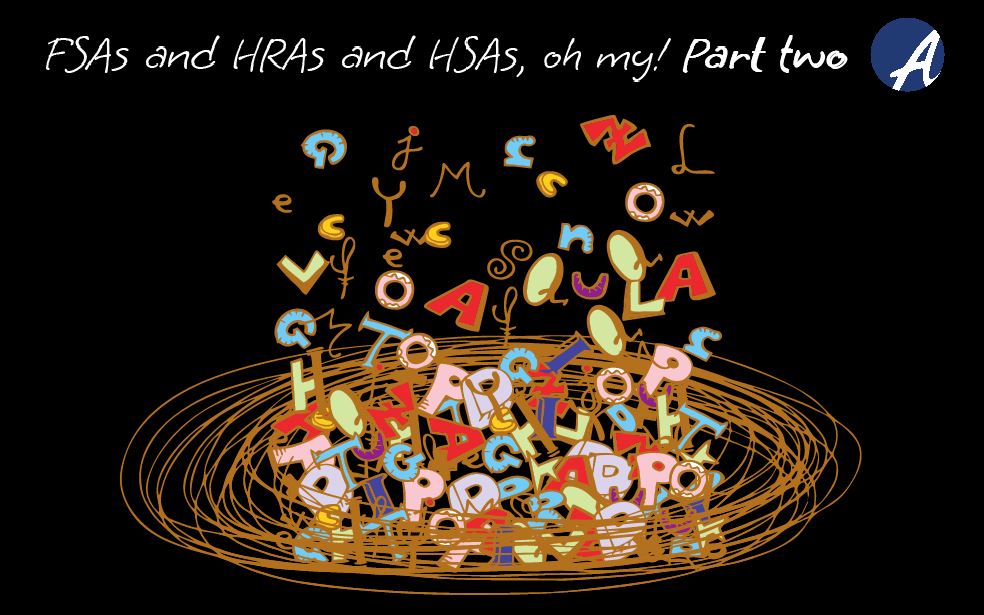3 min read
FSAs and HRAs and HSAs, oh my! Part three
As group health insurance premiums tick ever upward, firms of all sizes are seeking to lower costs. Consumer driven health (CDH) accounts, the...

As group health insurance premiums tick ever upward, firms of all sizes are seeking to lower costs. Consumer driven health (CDH) accounts, the generalized name given to a variety of accounts that allow employers and employees to save and spend some healthcare dollars as they see fit, may be part of your solution. In this three part series, we’ll explore how flexible spending accounts, health reimbursement arrangements and health savings accounts may be paired with group health benefits – and what aspects of each CDH account might be appealing to your employer groups.
HSAs provide a venue for both employers and employees to set aside pre-tax dollars for healthcare expenses. Though funded by both stakeholder groups, these funds belong strictly to the employee. Funds in these accounts can accumulate over time and may be used as a vehicle to save for retiree health expenses – there is no “use it or lose it” rule for these types of accounts.
HSA accounts tout a triple tax benefit. None of contributions, qualified withdrawals, or investment earnings are taxable. Just like FSAs, these accounts can reduce employees’ taxable income and allow them more precise control over their healthcare spending.
Financial flexibility
A number of HSA features combine to provide additional financial flexibility for both employers and employees.
Here’s where HSAs fundamentally differ from FSAs: the funds in these accounts belong entirely to the employee. Unused funds simply remain in the employee’s account until they find a good reason to use them. This feature enables employees to use these accounts to save for current expenses, budget for future ones and even save for retiree health care. Contribution limits do vary from year to year, but employees can rest easy knowing that any funds contributed to an HSA are theirs to keep.
Since HSAs must be paired with high-deductible health plans, those plans that feature this benefit could be an attractive option for employers to reduce premium spending. Employers also have the option of offsetting these higher deductibles by contributing to each employee’s account, which could be a valuable benefit in attracting and retaining employees. Taken together, these factors mean that we’ll expect to see more employers of all sizes offer this benefit to their workforce.
Not sure if an FSA, HRA or HSA is the best fit for your group? Let’s chat info@actionbenefits.com.
Read more: Part one
Read more: Part three

3 min read
As group health insurance premiums tick ever upward, firms of all sizes are seeking to lower costs. Consumer driven health (CDH) accounts, the...

2 min read
As group health insurance premiums tick ever upward, firms of all sizes are seeking to lower costs. Consumer driven health (CDH) accounts, the...

4 min read
Small businesses are the backbone of our economy, employing nearly half of the American workforce. Yet when it comes to employee benefits, these...